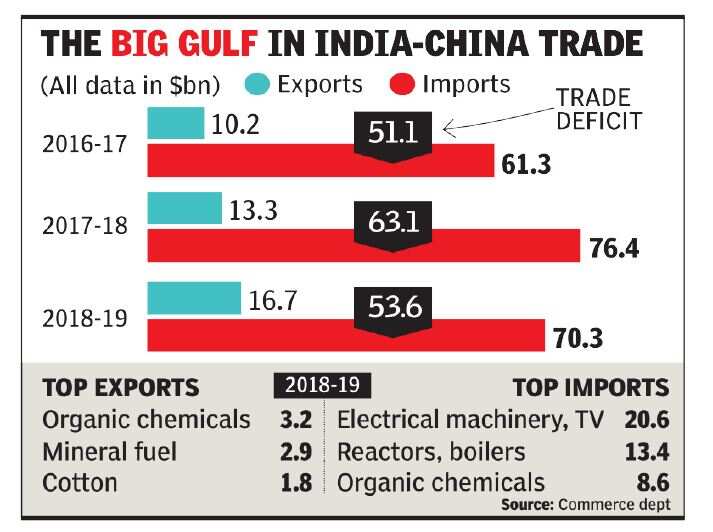Why in news?
China is surrounded by various geopolitical confrontations with a growing array of its Neighbours. standoffs with Vietnam and Malaysia in the South China Sea to threatening Australia with boycotts of wine, beef, barley, and Chinese students is threatening Chinese dominance.
Isolating China.
- The Indian, Japanese, Malaysian, and Australian governments have all taken concrete steps to reduce their economic exposure to Beijing, spanning investment, manufacturing, and technology.
- India and Australia recently inked a new military logistics agreement in the “virtual summit” between Prime Ministers Narendra Modi and Scott Morrison, and a similar agreement between Delhi and Tokyo may follow.
- The Quadrilateral Dialogue between Australia, India, Japan, and the United States is growing stronger and even expanding.
- Association of Southeast Asian Nations (ASEAN) Foreign Ministers issued one of their strongest statements to date on the South China Sea, insisting that maritime disputes must be resolved in accordance with the UN Law of the Sea treaty
What can USA do?
- U.S. policy needs to start supporting, rather than attempting to commandeer, regional efforts to build a less China centric future for the Indo Pacific
- U.S. partners are seeking an agenda that is framed in broader terms than simply rallying to counter Beijing.
- U.S. can think of harnessing the growing desire to reduce reliance on Beijing and try to “recouple” investments and supply chains among allied nations
- Washington should avoid repeating Beijing’s mistakes and offer a clear alternative in word and deed to China’s “Wolf Warrior” diplomacy
U.S. versus China
- Across the Indo Pacific, the desire for U.S. leadership remains strong, with the U.S. still viewed more favourably than China
- Facing the unprecedented health and economic crises spawned by COVID19, the U.S. and Asian partners will need to coordinate more closely than ever
- Asian countries, too, have an opportunity to continue strengthening their own regional networks, which will challenge and complicate the views of those in both Washington and Beijing who would see the region only as a sparring ground in a bipolar U.S. China competition
Historic ties between India and China
India and china have had relations sustained for more than 2000 years. First records of such a relationship was mentioned during 2nd century BCE. Chanakya, the minister of Mauryan empire has referred to Chinese silk in Arthashastra.
Buddhism has been the strongest bond between two countries. China has the largest Buddhist population in the world which comprises of 18.8% of the Chinese population.
Bilateral relations are dominated by trade commerce and People to people contact. Spices, Opium and Tea were the major products traded between the two big states. Various travelers including Hsuan Tsnag visited the silk in 7th century AD. In the very dynamic world scenario, bilateral relations deteriorated gradually.
India and china bilateral relations
- Political
- It marks the year of the 70th anniversary of the establishment of diplomatic relations between China and India.
- It is also China-India Year of Cultural and People-to-People Exchanges, where the two sides agreed to hold 70 celebratory activities to demonstrate the historic connection between the two civilizations as well as their growing bilateral relationship.
- There are 50 dialogue mechanisms between China and India for exchanging views on various topics of bilateral, regional and global concern.
- Heads of both the states met at Wuhan informally to boost the ties.
- Chinese president came to india for 2nd informal summit at Mamallapuram in 2019.
- Trade
- Trade relations have exponentially increased between India and China.
- In 2019, the trade volume between China and India was $70.3 billion. India has a trade deficit of around 50 billion $ with china.

- Chinese exports to India stand at around 15 billion $ and 2% of chinese exports.
- With a combined market of over 2.7 billion people and a GDP of 20% of the world’s total, China and India enjoy huge potential and broad prospects for economic and trade cooperation
- Investment
- Seven Indian Banks have opened branches in China. Chinese bank and ICBC have branches in India.
- Chinese investment is predominant in Indian start-ups. Companies like Ola, Uber, Swiggy, Flipkart have chinese stakeholders.
- Cumulative Chinese investment in India is around 5 billion $ including the recent purchase in HDFC bank
- The cumulative Indian investment in China till March 2017 reached US$ 705 million
- Defence
- India China take part in Hand-in-Hand’ joint anti-terrorist exercises to enhance mutual understanding and trust, exchange training experiences and jointly improve anti-terrorism capabilities.
- China-India defence and security consultations take part to strengthen exchanges and cooperation in the defence field.
- Defence partnerships and military exercises are possible if the diplomatic relations are strong and disputes are less or absent. Between India and China, there are very less defence related partnerships.
- People to People
- The number of Indian pilgrims to Xizang Autonomous Region of China has surged from several hundred in the 1980s to more than 20,000 in 2019
- There are around 25k Indian students studying in Chinese universities. 90% of the students are studying medicine. Chinese medical colleges attract students as the fees is relatively less and infrastructure is better.
India and China signed Education Exchange Programme (EEP) in 2006, which is an umbrella agreement for educational cooperation between the two countries.





